U pani i casa
I have vivid childhood memories in which we "went down" to Sicily, in Pachino, to spend the long summer holidays with my grandparents, during which I had the pleasure of attending one of those
social rituals with an ancient flavor several times, handed down for who knows how many generations, common to most Sicilian rural families: the preparation of
pani i casa.
Until the end of the 1980s, at my grandparents' house, with the help of my mother first and my uncle then, the
pani i casa was made
weekly, then much more rarely, up to the almost complete abandonment of the habit (probably due to the spread of bakeries more and more close at hand or, simply, to the evolution of different ways of life). In my grandmother's story there is the nostalgic tone of the ancient, of the flavors of the past which, by dogmatic definition, were better than those of today... My mother, on the other hand, remembers more the morning fatigue she was forced to on that fixed day of the week, before going to school.
The day before the preparation of the bread, my grandmother Angelina sent my mother to Aunt Turina to get a piece of
cruscenti/criscenti (strictly preserved with a cabbage leaf...), which took the name of
lavitinedda and which would be used to prepare a sort of pre-dough in the evening (also called
cruscenti/criscenti). The next day my grandmother placed in the
maidda (a large wooden container) several kilos of durum wheat flour (probably Russello, the most common wheat variety in the area and that my grandparents themselves cultivated),
cirnita col
crivu (ie sieved). Made a bowl in the flour, he melted the
cruscenti/criscenti (ie the pre-dough prepared the previous evening), with warm water and a little salt, kneading by hand until the dough had reached the right consistency to be
scaniatu on
sbria.
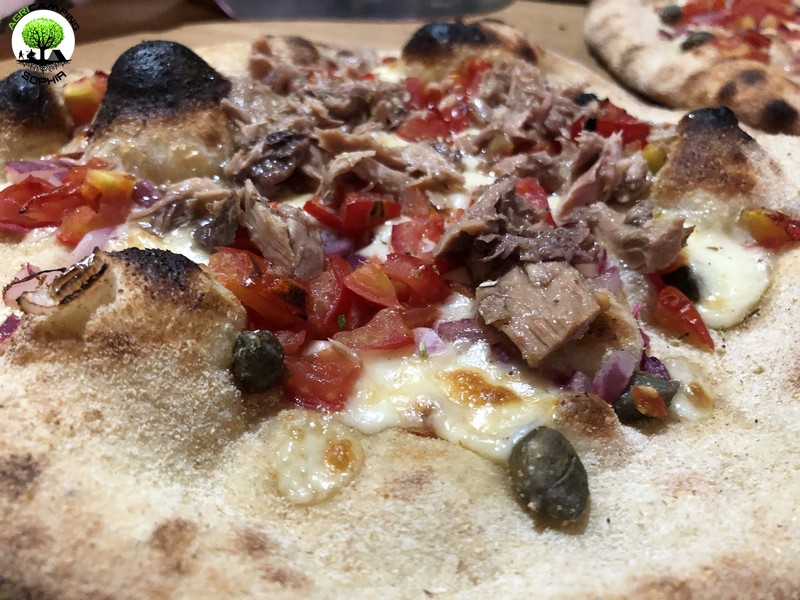 Scaniare
Scaniare
The
sbria is a malaxer, considered a sort of ancient manual planetary... On the
sbria is anchored, by means of a pin, a wooden board, the
sbriuni, which functions (borrowing a concept from physics) as a second-order lever. At the base of
sbria, in front of the anchoring system of the
sbriuni, there is a sort of seat, on which I remember that my grandmother sat astride,
turning and vigorously bending the dough in rhythm with the movements of the sbriuni, maneuvered by the
scaniaturi on duty. The
sbriuni therefore serves to compress the central part of the dough cyclically, effectively dividing it into two parts. This
scaniatura did not last more than twenty minutes (due to exhaustion...) The dough was then left to rest for a couple of hours, not before having
engraved a cross on it with an explicit superstitious-religious reference, covered with a clean cloth and a blanket to accelerate its leavening. Finally the loaves of bread were modeled and the oven was lit, with branches and
toppi (logs) of vines, for their cooking.
The
scaniatura is a bread-making technique that
has its roots at least in the nineteenth century. A type of
hard dough bread was obtained, with a small and compact alveolation, low hydration in order to favor its shelf life (since it is less subject to mold): that bread had to last a week...
Many bakeries in Pachino and in the towns of Syracuse and Ragusa still offer
u pani i casa even if certainly (and rightly ...) mixed with electric planetary machines and "bastardized", if nothing else, by portions of soft wheat flour. I remember that as a child, when I was in Pachino, I had breakfast several times with pieces of
breads in the house drawn, as if they were biscuits, in milk, probably "started" by my grandparents or by my father. it was its flexibility and centrality in the diet of Sicilian families of the past.
 The lexical gift
The lexical gift
The simple preparation of
pani i casa brings with it a rich terminology that draws on different cultural contaminations (the history of Sicily is very troubled...)
Maìdda refers to the wooden container used to knead the flour, known in the rest of most of the Italian peninsula with the term
madìa. The Italian
madìa comes from the Latin
magida, which means tray. The Sicilian
maìdda instead originates from the Arabic
màida, which can be translated as table (for table).
The Latin derivation, in particular from the present participle of growing, of the Sicilian lemma
cruscenti/criscenti is evident, designated to indicate the "mother yeast (or dough)" which, making leavening the dough, it makes it "grow". Also
lavitinèdda, derives from the Latin, from the supine to remove, and this also serves to "pull up" the dough, to "lift it".
The
crìvu, from the Latin cribum, is a sieve used to make flour.
Cìrniri, from the Latin cernere (to separate, to divide), means precisely to sift.
Latin is probably also the origin of
scaniare, precisely to be scanned, which in the meaning of raising, elevating, recalls the main purpose of scanning, that is to incorporate air into the dough by making it increase in volume.
sbriuni and
sbria most likely derive from the French briser, which in turn derives from the vulgar Latin brisiare , which means to break, to break. The action of the
sbriuni actually divides the dough in two, almost "breaking" it. In fact, the Italian term crumb also derives from brisiare. It is no coincidence that the typical transalpine shortcrust pastry brisèe is characterized by extreme friability (brièe is the past participle of the French briser).
Pizza? Drive away!
My grandparents started talking about pizza only when, even in the extreme Italian latitudes, the first pizzerias spread. To perform the function of the famous Neapolitan dish, in this south-eastern corner of Sicily, were the
caicchi, the
vota vota, the
'mpanati, the
scacce. The dough was essentially the same as the home bread, with at most small variations in hydration (strictly by eye ...)
Vota vota and caicchi are a kind of trousers: the difference between the two, my grandmother explains to me, is that the first the disc of dough is seasoned (just like a pizza) and votes (turns on itself) three times. Instead the
caicco closes just like a calzone, in a crescent shape, sealing it with a small flap of dough along the edge, the
rieficu. The traditional dressing of
vota vota is parsley, tomato and potatoes; the
caicco, more consistent, is seasoned with onion, potatoes and sausage. Then it is obvious that each family has its very own version and variation on the theme.
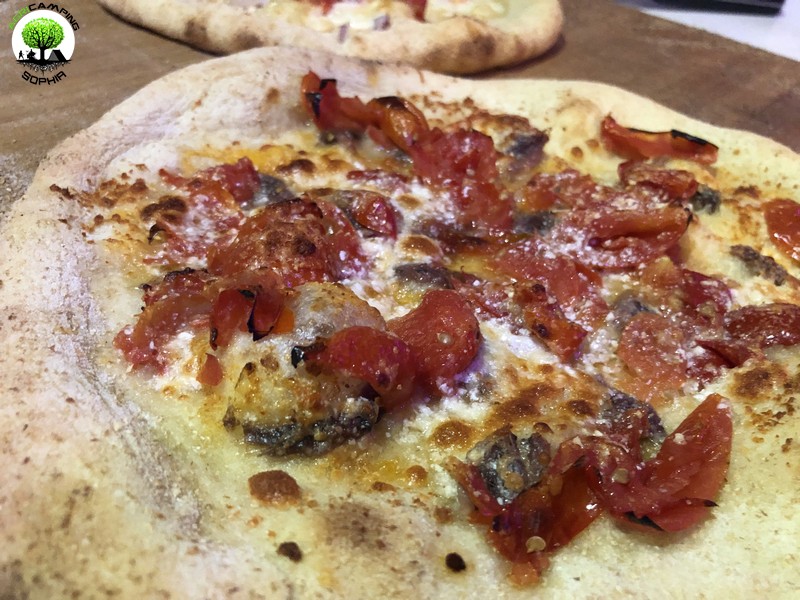 Pizza? Drive away!
Pizza? Drive away!
My grandparents started talking about pizza only when, even in the extreme Italian latitudes, the first pizzerias spread. To perform the function of the famous Neapolitan dish, in this south-eastern corner of Sicily, were the
caicchi, the
vota vota, the
'mpanati, the
scacce. The dough was essentially the same as the home bread, with at most small variations in hydration (strictly by eye ...)
Vota vota and caicchi are a kind of trousers: the difference between the two, my grandmother explains to me, is that the first the disc of dough is seasoned (just like a pizza) and votes (turns on itself) three times. Instead the
caicco closes just like a calzone, in a crescent shape, sealing it with a small flap of dough along the edge, the
rieficu. The traditional dressing of
vota vota is parsley, tomato and potatoes; the
caicco, more consistent, is seasoned with onion, potatoes and sausage. Then it is obvious that each family has its very own version and variation on the theme.
The etymology of
vota vota is quite clear,
from the vulgar Latin voltare. The identification of the origin of the term
caicco is much more difficult. Today the
caicco, a typical Turkish boat, is widely believed to derive from the
goleta (schooner) of the Venetian navy which, in turn, derives from the French
goélette. Etymologically, this leads to the Celtic
goéland and the Breton
gwelan, which means, in both cases, seagull (probably referring to the agility with which the bird swirls flush with 'water). The crescent shape of the Pachinese
caicco actually recalls a boat and it is also probable that the name derives from an Arabic form (like many other Sicilian terms), only the Arabs dominated Sicily from 827 to 1091 and the schooners began to spread only between 1600 and 1700. It is true that the Saracen pirate raids continued in the following centuries, but it is unlikely that their cultural influence was such as to make the Sicilians decide ( the Pachinesi did not yet exist) to call a culinary product with the name of the boats through which they came to raid the coasts.
If the homonymy of the "modern" Turkish boat did not lead us astray, the
gulet may actually have been a type of medieval Arab boat , common in the era of 'Emirate of Sicily. However the
caicco as a dish is present only in Pachino: in the neighboring municipalities similar preparations are called in another way (for example in the Ragusa area, which has most influenced the typical Pachinese cuisine, they are called
scacce and
buccateddi).
What if the term caicco was of Maltese origin? Pachino was co-founded in 1760 by about thirty Maltese family groups, invited to populate the nascent country by Ferdinand I, still speaking a direct derivation of the extinct Sicilian-Arabic language. This would explain why in Noto, Avola, Rosolini, Ispica or Modica the
caicchi are not called
caicchi...
And the term
rieficu? It probably derives from
from the Latin refigere which also has the meaning of rebuilding, completing, restoring. The
rieficu in fact completes the preparation of the
caicchi, sealing the dough.
'mpanati (breaded) are a focaccia common to almost all of Sicily, which in Pachino I saw seasoned with cod and onion, cauliflower and sausage, ricotta and onion, even with pasta (especially lolli, which I will certainly tell you about in another post), especially during the Christmas period. It is certainly a legacy of the Spaniards (
empanadas…)
A quick mention should be made for the Easter (but not necessarily)
cassateddi, small cakes filled with ricotta, a poor and reduced version of the more famous
cassata (also of Arabic origin, from
quas'at, the lemma indicating the container in which it was prepared).
And finally, here we are with
the scaccia, the Pachinese pizza. Of uncertain etymology, it recalls the Italian
schiacciare, like
schiacciate (dishes different from each other but widespread throughout Italy), therefore a common origin from vulgar Latin
coactiare/coactare. It tends to have a slightly higher hydration mixture than that of
pani i casa, especially the
scaccia muddiata (from the Latin
madida, which means impregnated, soaked, soaked), the dough of which remains moist due to the gradual addition of water and oil on the surface (like a salamoia in Genoese focaccia). The traditional dressing is basically simple: tomato sauce, garlic, anchovies and oregano. A variation on the theme involves the addition of grated pecorino or caciocavallo cheese.
If without sauce, it is called scacciuni. In particular, the
muddiata version is reminiscent of a lower Palermitan
sfincione.
At Agricamping Sophia we tried to recover the tradition of Pachinese scaccia, revisiting the original procedure in the light of what we studied and were able to experiment on leavened products at the time where those who want to learn have all the tools to be able to grant themselves much more than (to stay on the subject...) a smattering. In the wake of the
muddiata version, we
pushed a bit on the hydration of the dough and integrated fold cycles during rising, considerably increasing the times. We have kept a fair percentage of whole Sicilian semolina to wink at the rustic flavor of the past. We season only with local agricultural and artisanal products that tell our corner of Sicily. And,


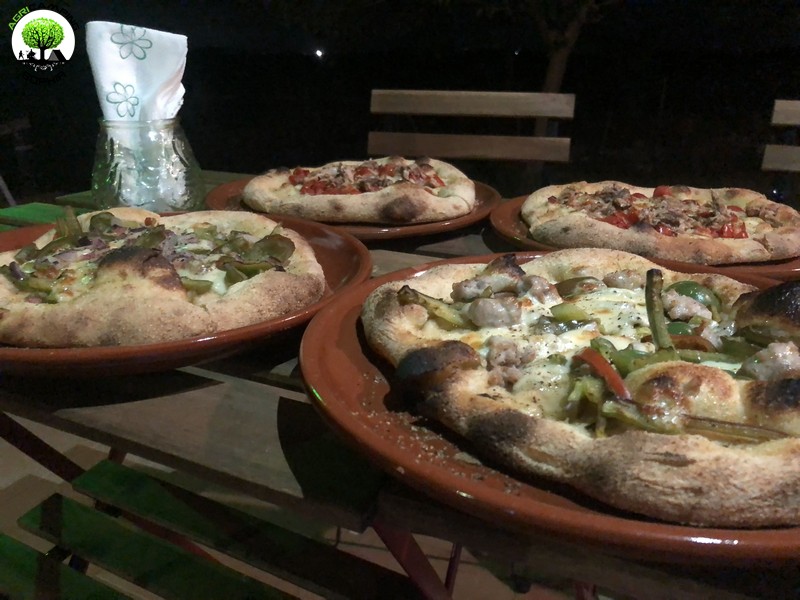



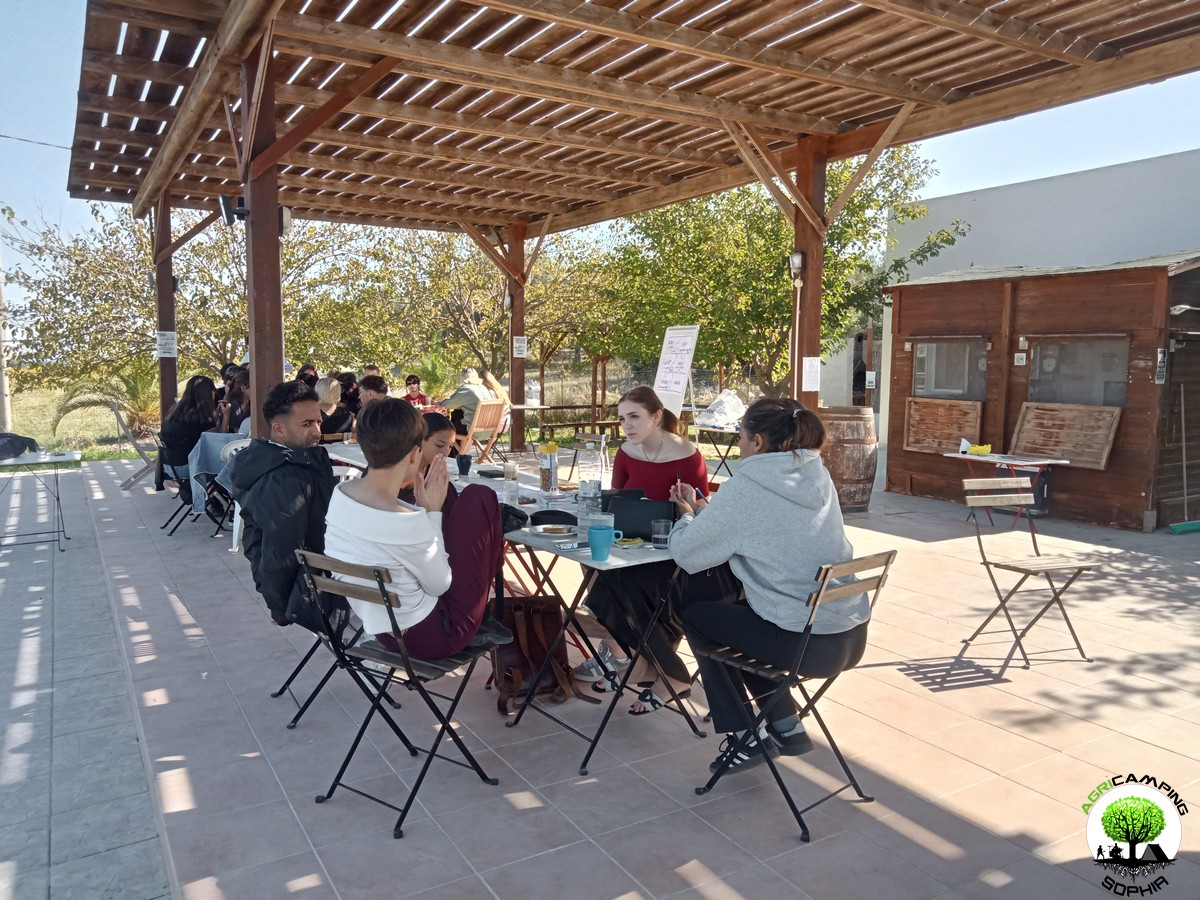 DO YOU WANT TO ORGANIZE AN ERASMUS AT AGRICAMPING SOPHIA?
DO YOU WANT TO ORGANIZE AN ERASMUS AT AGRICAMPING SOPHIA?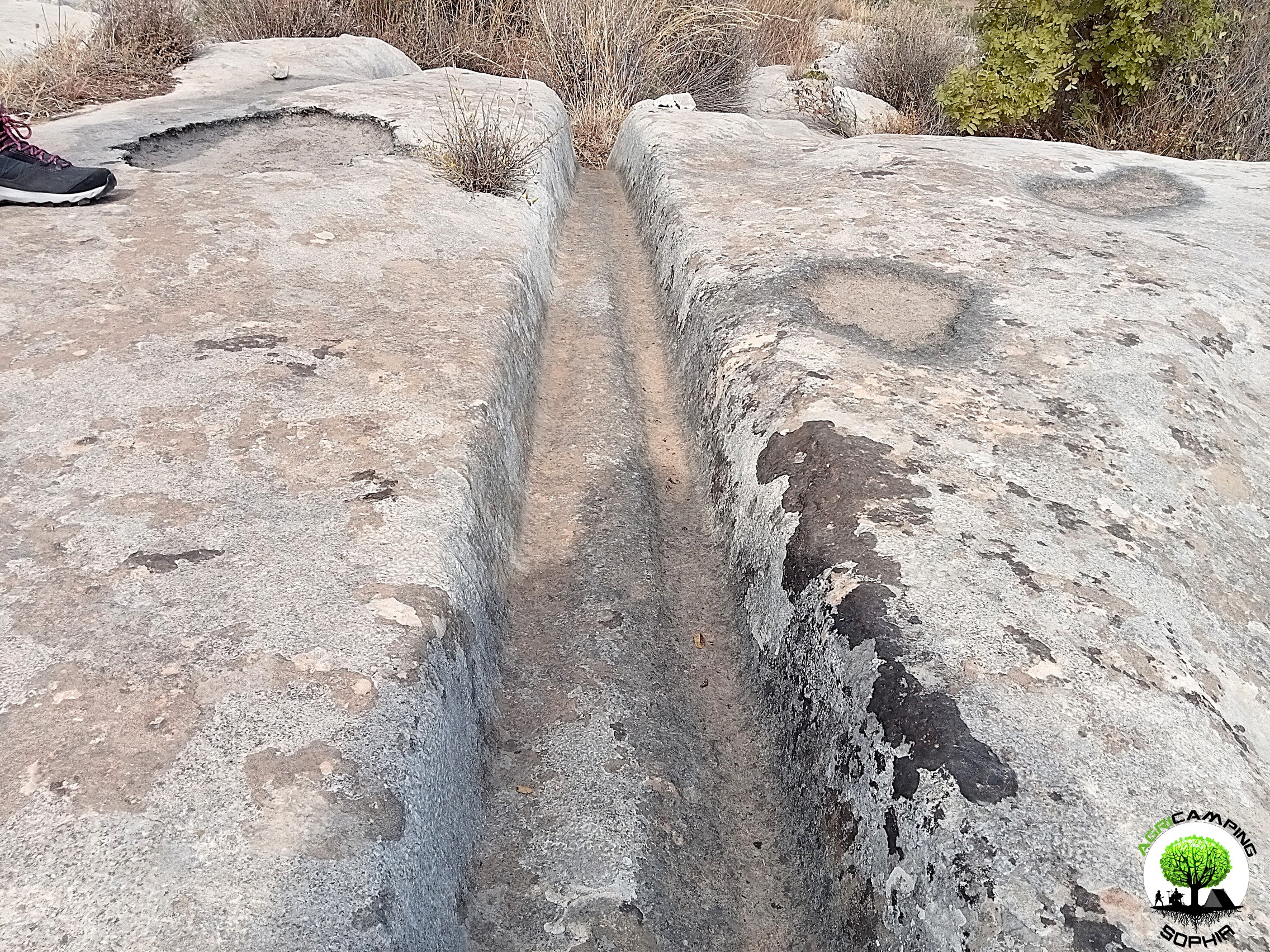 CART RUTS MODELED ON SOFT ROCK?
CART RUTS MODELED ON SOFT ROCK? RACK OR HOUSING FOR CLOGS?
RACK OR HOUSING FOR CLOGS?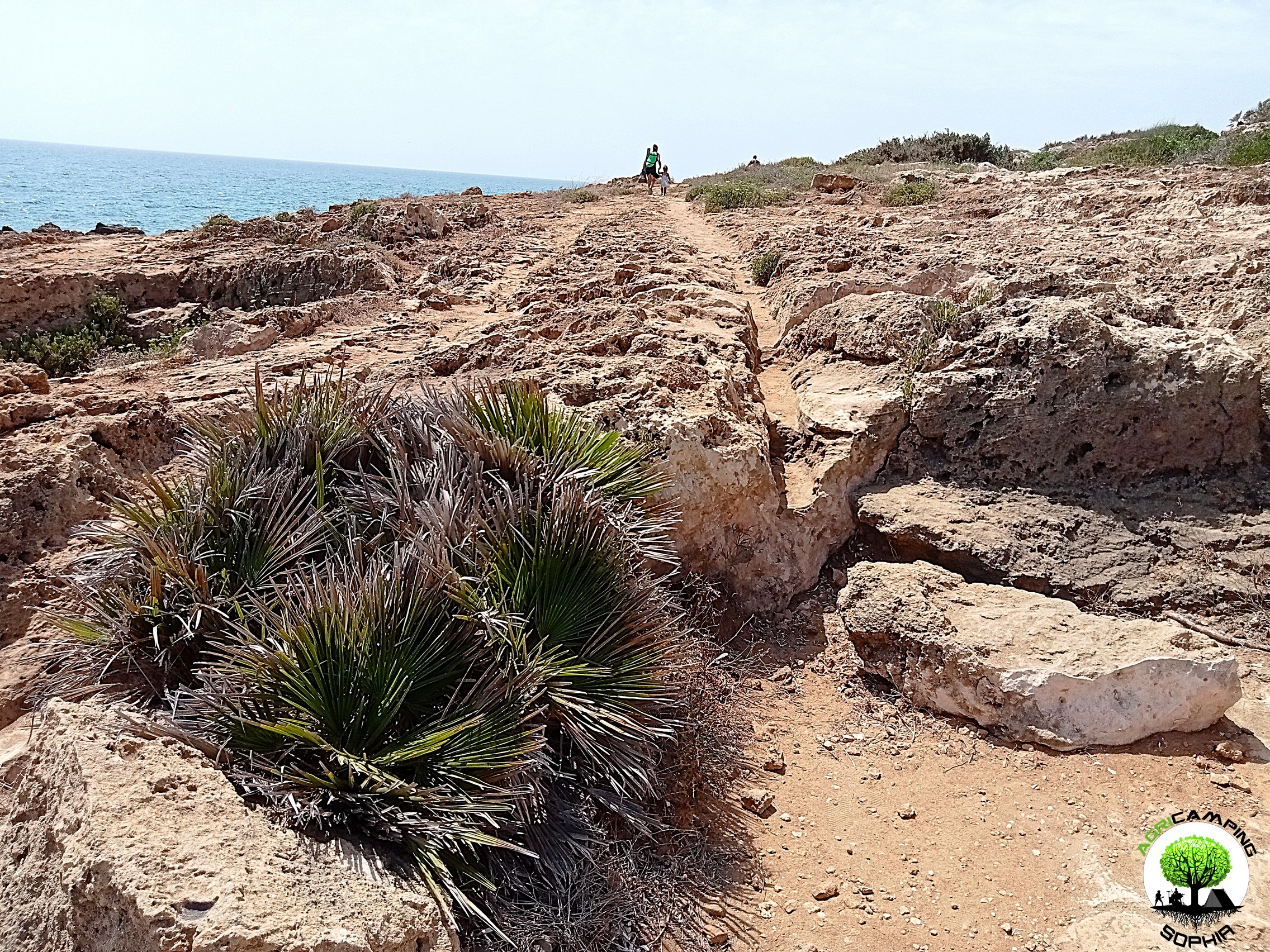 CART RUTS CUT FROM QUARRIES
CART RUTS CUT FROM QUARRIES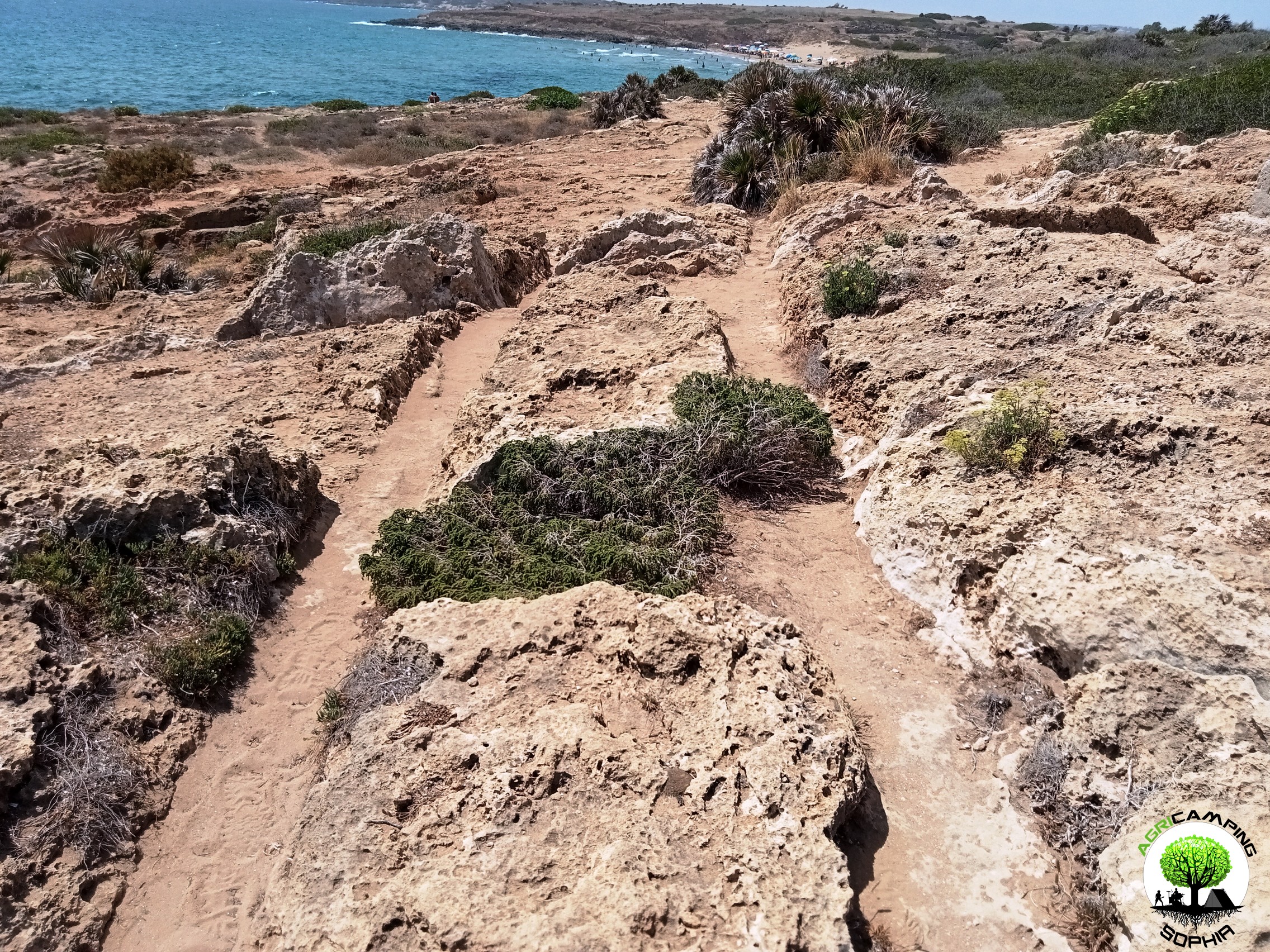 CART RUTS AND A FEW TOO MANY PROJECTIONS
CART RUTS AND A FEW TOO MANY PROJECTIONS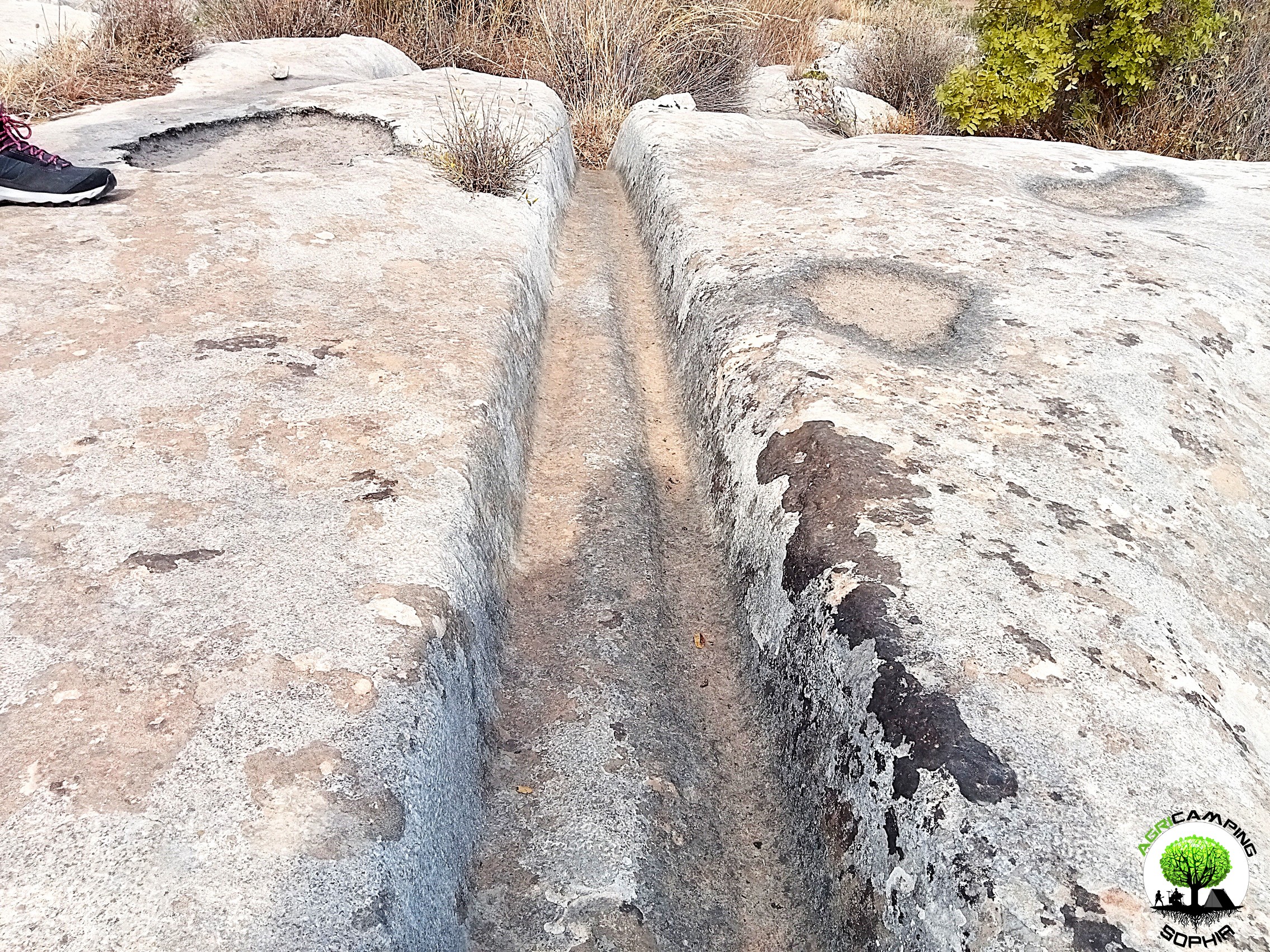 THE POLISHING OF THE CART RUTS
THE POLISHING OF THE CART RUTS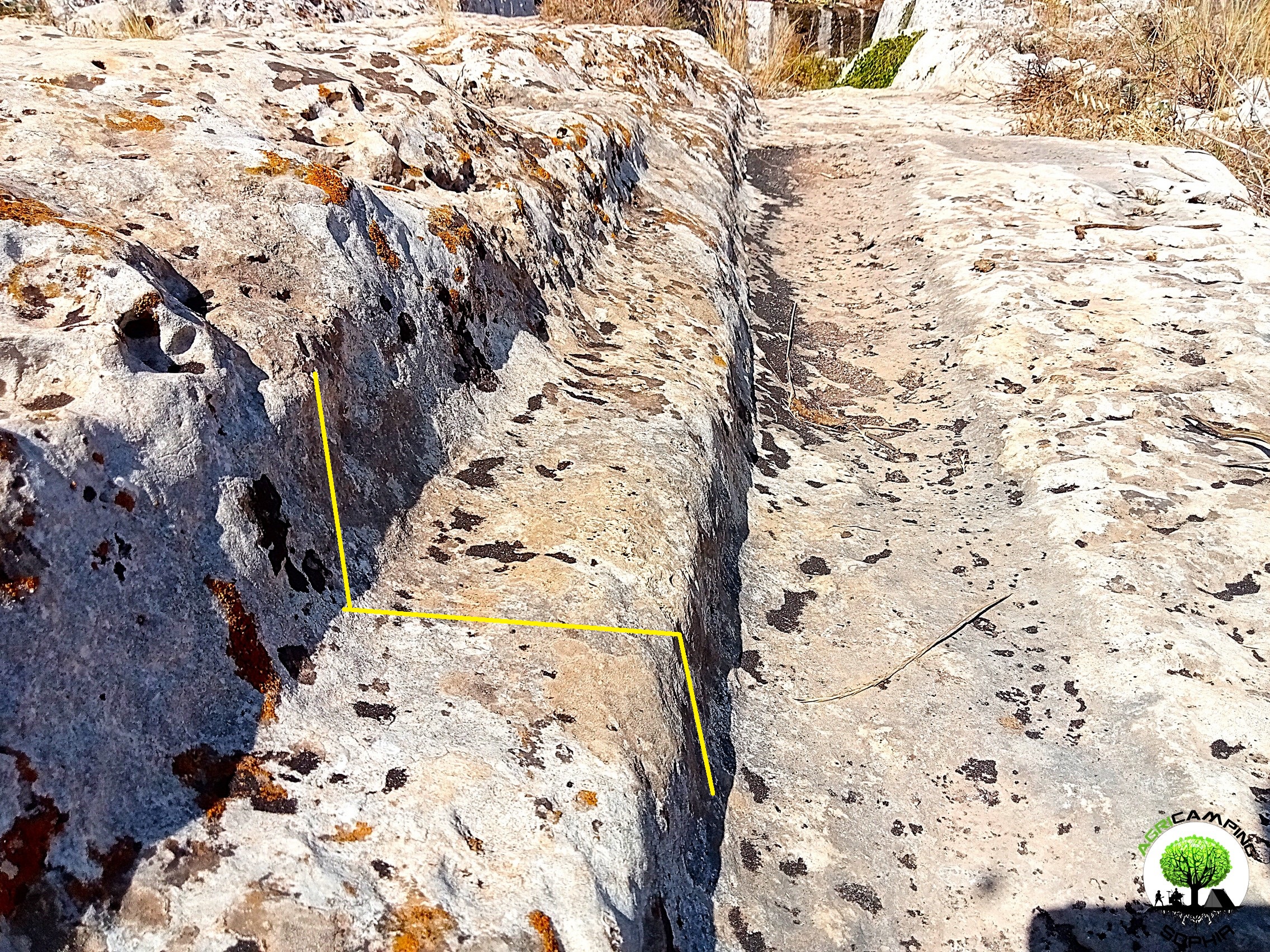 THE PROBLEMATIC EDGES OF THE CART RUTS
THE PROBLEMATIC EDGES OF THE CART RUTS THE PROBLEM OF CART RUTS IN SOUTH-EASTERN SICILY (PART FOUR)
THE PROBLEM OF CART RUTS IN SOUTH-EASTERN SICILY (PART FOUR)